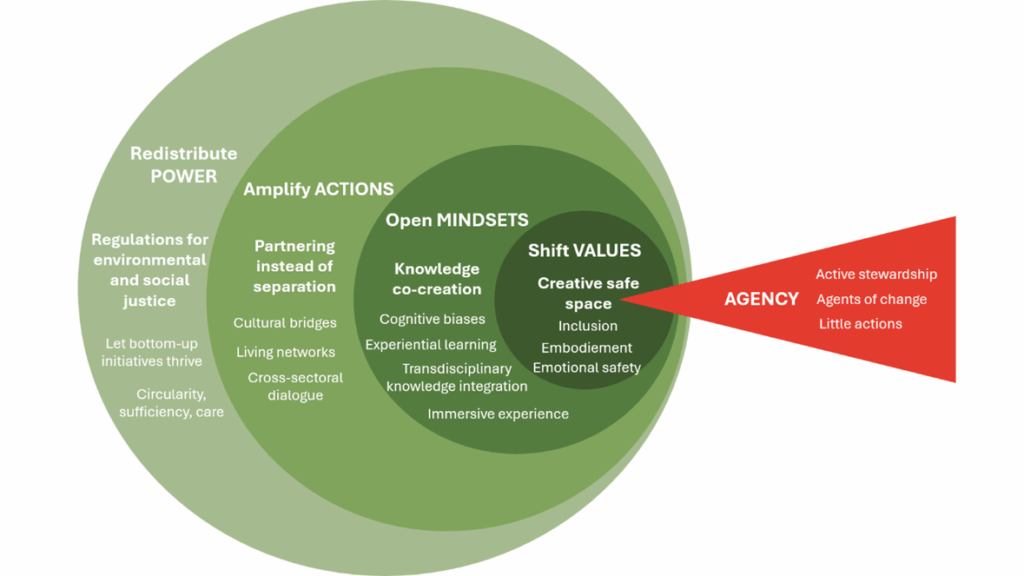People, Places, and Policies: Stories of Pathways for Transformative Change
We need real change in biodiversity prioritisation. But how can we move beyond well-worn communication panels, alarming statistics, and broad statements? The PLANET4B project addresses this challenge, and co-created place-based experiments and examined sector-based examples that reveal leverage points and enabling conditions for transformative change at the individual, community, and institutional levels. Read our recent comprehensive analysis and conclusions.
Eleven stories, lots of lessons
Over three years, the project conducted eleven case studies to understand how biodiversity-related decision-making interacts with social practices, values, and institutional contexts. Alongside analyses, participatory and arts-based work with Learning Communities and Stakeholder Boards has revealed valuable insights into social–ecological change for biodiversity and social justice.
The compendium of Transformative Change Stories brings together these insights, helping us to understand the pathways, tools, and opportunities for transformative change – as well as the obstacles and challenges.

From safe spaces to systemic change (own elaboration inspired by Karen O’Brien’s three spheres of transformation)
Readers will learn:
• how the Oslo case advanced inclusive approaches to outdoor learning, making nature experiences accessible for children with diverse abilities and needs;
• what creative methods were used in Erfurt to involve young people – especially those with less political voice, such as migrants – in discussions on biodiversity, and how this shapes their decisions;
• how a small initiative among people of South Asian and African heritage in the UK grew into a space of connection and mutual learning about biodiversity;
• how a community garden in Graz became a model of inclusivity, cultural and biological diversity, and empowerment;
• how pupils and teachers benefited from experiental learning about nature and biodiversity through hands-on gardening activities;
• how small rural communities can support preserving local plant varieties through collective seed saving and the exchange of traditional knowledge;
• what links may exist between religion and biodiversity-friendly farming, and how creative methods can make these connections visible;
• how biodiversity is interwoven with social justice, global trade, financial decision-making, and the environmental and social impacts of industries such as fashion and agriculture.
The comprehensive report is availabe in the project library.
If you need shorter summary, download the report brief.
